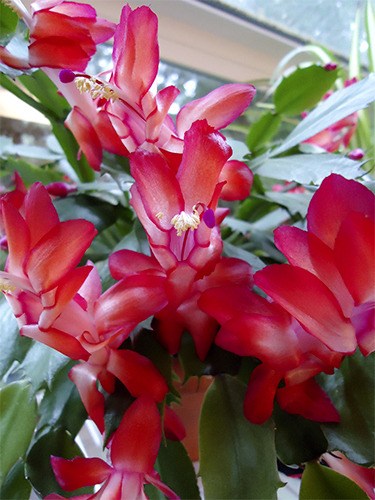by Jeanette Stehr-Green
For the Sequim Gazette
Did you know that you can get most flowering holiday gift plants to bloom again with the right care and a few special steps in the fall?
Just clip and follow the calendar below.
• January: Throw away faded paperwhites. (These are the only holiday gift plants that will not re-bloom.)
Allow your Christmas cactus to rest after all blooms have dropped by moving it into a cooler spot (55-60 degrees) and decreasing watering.
Remove flowers from amaryllises as they fade; after all blooms are spent, cut the flower stalk to 2 inches above the top of the bulb.
Place poinsettia and amaryllis plants in a bright, sunny indoor spot. Water when the soil surface dries and fertilize every 2-4 weeks with a balanced fertilizer such as a 10-10-10 nitrogen-to-phosphorus:potassium mix. Continue this care until late summer.
• Late March-early April: Resume normal care of your Christmas cactus. Move it into bright, indirect light (direct sunlight will burn the leaves); water when the soil surface dries; and fertilize every 2-4 weeks with a balanced fertilizer. Pinch back the stems (by breaking off one or two segments) to encourage branching.
Cut back your poinsettia to 8 inches tall for a fuller, more compact plant.
• May-August: Continue care as above. When outdoor temperatures are consistently above 55 degrees, consider moving holiday gift plants outside.
Expose them to outdoor conditions slowly, starting with a few hours each day and working up to leaving them outside overnight.
Place Christmas cactuses in a shady spot and poinsettias and amaryllises in full sun. Prune your poinsettia as needed for bushy, compact growth.
• Late August-early September: Stop fertilizing all holiday gift plants. Bring them indoors when night-time temperatures drop below 55 degrees.
Stop watering your amaryllis and move it to a cool spot (50 degrees).
• Early October: To encourage bud formation, move your Christmas cactus into a cool room (50 degrees) and decrease watering. Provide indirect, bright light during the day and 12 hours of darkness each night. Once you see buds forming (after about 6-8 weeks), move your Christmas cactus to where you wish to display it and leave it. Moving it around will cause the buds to drop.
Place your poinsettia in complete darkness for 12 hours each night, moving it to a bright spot during the day.
Continue this regimen until bracts start turning color (about 10 weeks).
• Early November: Cut back amaryllis leaves (many of which will have turned yellow and withered) and move to a warm, sunny spot. Water thoroughly and do not water again until the top 2 inches of soil dry out or leaves appear.
• December-January: Enjoy the blossoms! To extend the life of the blooms, place plants in indirect light and moderate temperatures (60-70 degrees). Water when the soil surface dries; do not let them sit in water. Do not fertilize holiday gift plants until blooming is complete.
Jeanette Stehr-Green is a WSU-certified Clallam County Master Gardener.



